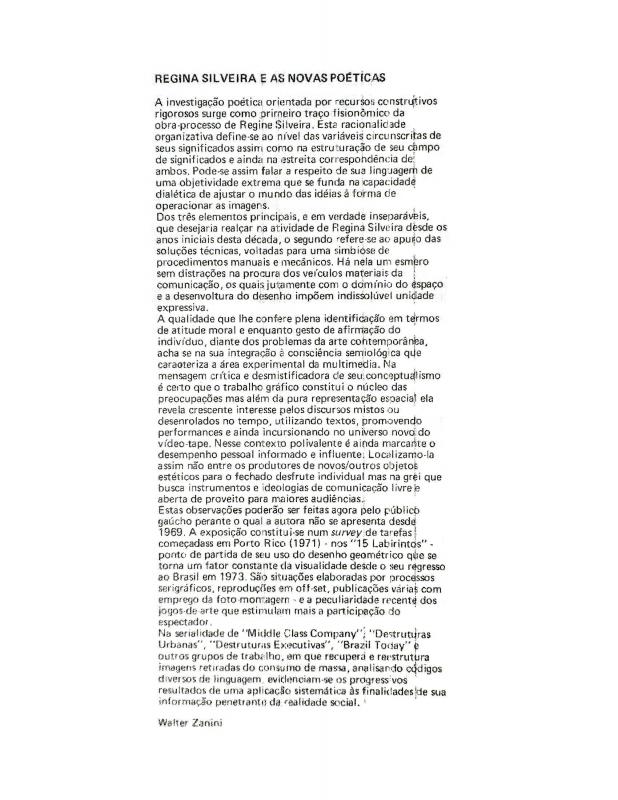This text is both a manifesto and an introduction to an exhibition of works on microfiche, held at the Museu de Arte Contemporânea da Universidade de São Paulo (MAC-USP) in 1982. The show was jointly organized by the artists Regina Silveira and Rafael França. Artemicro brought together works by Alberto Cedrón, Ana Maria Tavares, Carmela Gross, Florian Raiss, Julio Plaza, Antonio Lizárraga, Gabriel Borba, Nelson Leirner, and the Argentinean León Ferrari, among others.
Regina Silveira (b. 1939) began her art life as a painter, printmaker, and draftsman in the 1960s in Porto Alegre, the capital of Rio Grande do Sul. A European trip stirred her interest in the multiple possibilities of spaces taken up by geometric forms. Working as an art teacher in Puerto Rico (1969), the artist found her work splitting into two elements: (1) pursuing aspects of artisanal development and (2) following her interest in modern reproduction techniques. The Island of Enchantment also favored her immersion in the phenomenon of what was called the “dematerialization” of the object. Back in Brazil in 1973, she settled permanently in São Paulo. In the 1970s, she executed notable series such as Destruturas Urbanas [Urban Destructures], Executivas [Executives], and Brazil Today, in which she arranged books, albums, and other objects in combinations that reflect on environmental issues, bureaucracy, and power.
There is a text by the professor Walter Zanini, entitled “Regina Silveira e as novas poéticas” [doc. no. 1110655], about an exhibition also held at the MAC-USP, which makes use of such “art games” to stimulate viewer participation. At the same time, the artist analyzes various visual language codes.
The premise of the journal Arte em São Paulo was the possibility of developing a journal that would have its own independent impact on the Brazilian art world. To begin with, its editor was artist Luiz Paulo Baravelli, and years later the editorial function was performed by journalists Marion Strecker Gomes, and Lisette Lagnado, who was also a curator. There were a total of thirty-seven issues of this journal, which was published until 1987.

